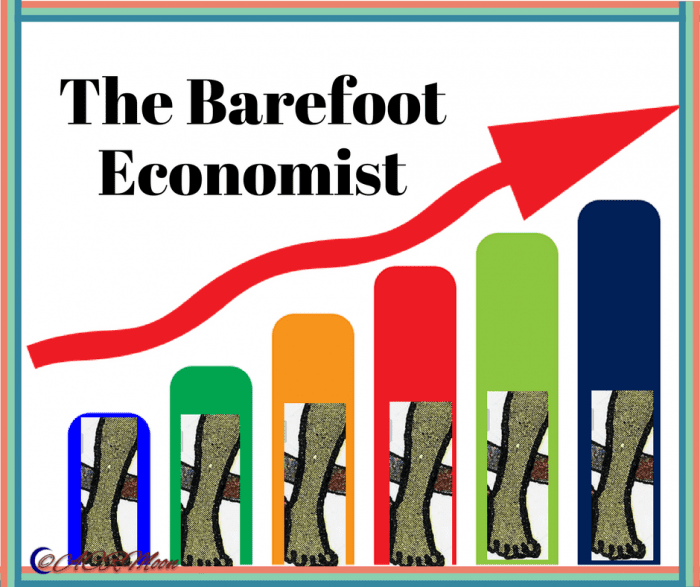Prof Bhaskar examines India’s inflation’s intricate nature, focusing on its impact on the salaried middle class, income distribution, and economic development, exclusively for Different Truths.

People bracketed as the salaried middle class in India often feel concerned about inflation, and some even express that they are being burned like a candle at both ends—one inflation, the other taxes. Let us look at the first one, inflation.
Inflation holds different meanings for various groups of people, except for economists. For the devotees gathered at the Mahakumbh in Prayagraj, Uttar Pradesh, in 2025—an event that could involve over a quarter of India’s population—inflation is largely irrelevant. Among the top five per cent of the population, the affluent view inflation primarily in terms of how it affects their ability to purchase durable consumer goods. In contrast, subsistence farmers, whose exact numbers are unclear, are generally unaffected by inflation because they are not sellers of their produce. They make only minimal purchases of essentials from the market, which likely mitigates its impact on them. Additionally, the large segment of the population that relies on the Public Distribution System for food grains seems to have adapted to living with inflation, effectively learning to navigate its challenges.
What is Inflation?
What exactly is inflation—is it the consumer price index or the cost-of-living index? Is it related to food prices, often called “foodflation,” or vegetable prices, termed “vegflation”? Or does it refer to the wholesale price index?
In my view, inflation essentially reflects the cost of living for the vocal middle class, particularly those who are salaried and primarily reside in urban areas. These individuals are typically consumers of the basic necessities. It’s important to note that, within the household budget of this middle-class segment, food accounts for less than 50% of monthly expenses. Therefore, a rise in food prices will reduce their real income, but by less than half of what it could have been if non-food items were also considered. This group, however, tends to overlook the prices of luxury goods like televisions, refrigerators, air conditioners, and personal cars. Instead, they are more concerned about “merit” goods, such as higher education and healthcare, which are not included in the current analysis.
Let us come to the broader question. Inflation is a need for the investors for a higher return on investment, and it is a need for the government for price-led estimation of GDP. So, the receiver of the final prices of goods is not against inflation, and inflation partially explains ‘Vikas’ or development.
Understanding Wage Rate
The market operates based on relative prices, and the wage rate is also considered a price. In a machine-led environment with higher productivity, we expect the wage rates of workers in the organised sector to increase. However, during inflation, the real wage rate does not rise because the ratio of prices (P) to wages (W) declines. This occurs when the increase in the final commodity price (P) outpaces the rise in wage rates (W). It’s important to note that this wage pattern is primarily observed in the organised sector, which encompasses only about 10% of India’s working population. Self-employed workers typically do not compare prices and wages, although some skilled workers, like electricians and plumbers, occasionally seek higher rates for their services, citing the rising cost of living. However, they do not refer to their increased productivity as a reason for raising their rates.
The middle section highlights another impact on savers who save money to secure their future by earning regular interest through their bank deposits. In Keynesian terms, this is referred to as precautionary savings, which exceeds the amount needed for current transactions. When inflation occurs, the interest rate earned by savers is often lower than the rate at which the prices of the final goods they purchase are rising. The general theory of prices, which suggests that they are determined by the demand-supply mechanism, often loses significance in many situations, regardless of government intervention. This crisis is especially evident for retired individuals who do not have a pension plan.
One important aspect often overlooked in discussions about inflation is that it represents a form of income distribution. In a situation of rising prices for final goods, net sellers benefit, while employees in the organised sector, particularly unionised workers, may anticipate higher wage rates. However, if these wage increases occur with a time lag, there can be a rise in nominal wages accompanied by a decline in real wages, a shift that may not be immediately apparent. Even if a few people recognise this issue, the disconnection of workers from technology and the final product places them at a disadvantage. Additionally, money serves as a commodity with a price, and its distribution tends to favour those who control capital.
Vegflation Decoded
Lest I forget, I want to share an interesting fact. Over a decade ago, I was invited to deliver a lecture at a university in West Bengal. The event was organised for vegetable vendors who had recently finished their intermediate education. At that time, there was a phenomenon known as “Vegflation,” which caused concern among the middle class due to rising prices. Surprisingly, these vendors questioned me about the reasons behind such market behaviour. I responded, “You are sellers; why are you asking questions that seem to go against your interests?” They appeared puzzled by my remarks. This episode presents several implications, one of which is quite clear: sellers with low incomes often lack the understanding needed to effectively manage their position in the product market. It appears that it is the wealthy tycoons and the government who grasp these intricacies, while these uninformed individuals remain unaware of the complexities of the money market.
The goal is not to defend or combat inflation. Once a money-based economy is established, the outcomes manifest in trade cycles, which reflect the possibilities of macroeconomic indicators, with inflation being one component. The challenge is to control inflation in the non-labour commodity market, as uncontrolled inflation can lead to a skewed distribution of income favouring a small group that benefits from inflation. The controllers of capital cannot be relied upon to manage inflation, even if they set ceiling prices or promote competitiveness through advertising. The responsibility ultimately lies with fiscal authority.
Picture design by Anumita Roy






 By
By


 By
By
Instructive, clear and without talking down to the hoi polloi — thank you, professor saab!